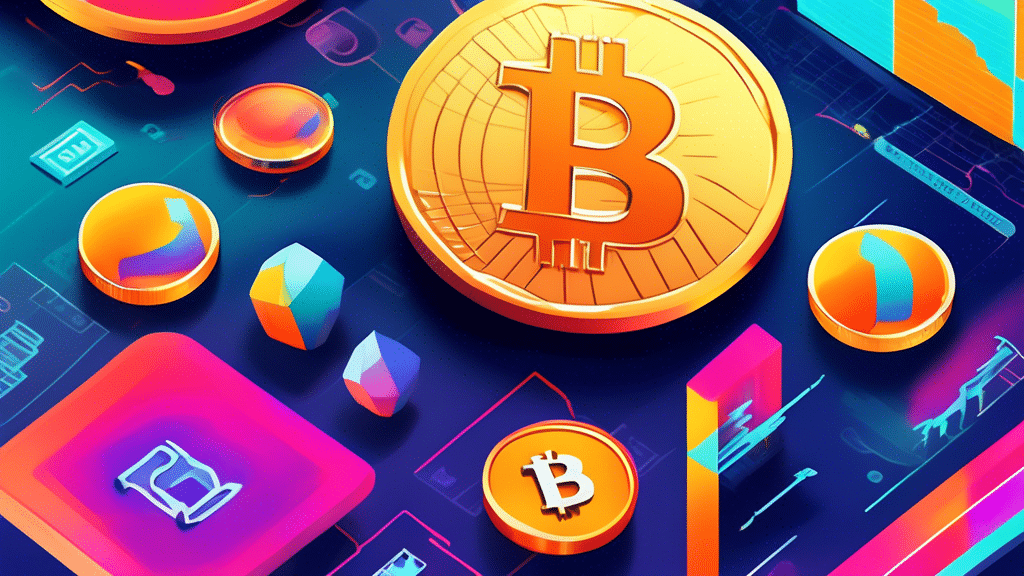Article The Dynamic Interplay Between Cryptocurrency and Traditional Stock Markets In recent years, the financial landscape has been significantly reshaped by the emergence and adoption of cryptocurrencies.
The Dynamic Interplay Between Cryptocurrency and Traditional Stock Markets
In recent years, the financial landscape has been significantly reshaped by the emergence and adoption of cryptocurrencies. This burgeoning sector of digital assets is increasingly interacting with traditional financial markets, leading to new opportunities and challenges in asset management and trading. This article explores the multifaceted dynamics of this interplay, particularly focusing on the innovative concept of real-world asset tokenization and its implications for global markets.
Understanding Real-World Asset Tokenization
Asset tokenization involves converting the ownership rights of tangible assets into digital tokens that reside on a blockchain. This process encompasses several key steps, including accurately identifying the asset, establishing a robust legal framework, and then representing the asset digitally through blockchain technology. The types of assets that can undergo tokenization are extensive, ranging from real estate and private equity to fine art, commodities like gold, and even intellectual property. This broad applicability highlights the transformative potential of tokenization for various asset classes.
One of the primary benefits of tokenization lies in its ability to enhance liquidity for traditionally illiquid assets. By converting these assets into fractional ownership tokens, tokenization allows for easier and more efficient trading on secondary markets. This leads to increased market accessibility, enabling smaller investors to participate in asset classes that were previously out of reach. The advent of smart contracts further streamlines this process by automating token issuance, transfer, and compliance with regulatory requirements, thereby ensuring smooth and secure transactions.
Efficiency, Cost Reduction, and Regulatory Compliance
Tokenization also brings significant efficiency and cost reduction benefits to the asset management process. By eliminating intermediaries and reducing administrative overhead, it lowers transaction costs and accelerates settlement times. This technological advancement is poised to revolutionize the way assets are issued, transferred, and settled across global financial landscapes.
However, the journey towards widespread adoption of tokenized assets is fraught with regulatory and technical challenges. Ensuring compliance with the myriad of securities regulations, determining ownership rights, and accrediting investors are critical components of the tokenization process. Smart contracts play a crucial role in this sphere by automating compliance checks and ensuring adherence to established rules. Additionally, the custody of underlying physical assets remains a cornerstone of tokenization, often necessitating the involvement of custodians or trustees to manage these assets effectively.
Despite these challenges, the market is seeing a growing number of examples where real-world assets are being successfully tokenized. These range from real estate portfolios and energy projects to equity funds and art collections. The tokens derived from these assets enable a more democratized and efficient marketplace, attracting greater investor participation and fostering innovation.
Impacts on Financial Markets
The tokenization of real-world assets is creating a more refined and efficient marketplace for private company securities. This integration of blockchain technology into traditional financial systems is expected to attract significant investments, establishing a comprehensive international marketplace for these securities. As the technology and regulatory frameworks continue to evolve, the potential for asset tokenization to revolutionize financial markets becomes increasingly clear.
Related: Bitcoin Steadies at $90K as Vanguard Joins Crypto
The intersection of cryptocurrency and traditional stock markets is thus a fertile ground for innovation and growth. By embracing the benefits of tokenization, while addressing its challenges, the financial sector can unlock new avenues for investment, trading, and asset management, driving forward the future of global financial markets.
Quick Summary
Article The Dynamic Interplay Between Cryptocurrency and Traditional Stock Markets In recent years, the financial landscape has been significantly reshaped by the emergence and adoption of cryptocurrencies. This burgeoning sector of digital assets is increasingly interacting with traditional financial markets, leading to new opportunities and challenges in asset management and trading.
Source
Information sourced from official Ripple publications, institutional research, regulatory documentation and reputable crypto news outlets.
Author
Ripple Van Winkle is a cryptocurrency analyst and founder of XRP Right Now. He has been active in the crypto space for over 8 years and has generated more than 25 million views across YouTube covering XRP daily.
Editorial Note
Opinions are the author's alone and for informational purposes only. This publication does not provide investment advice.


